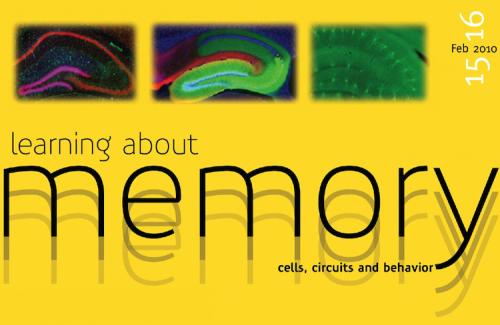Maestros of Memory
This week on February 15 and 16 NCBS will host a meeting, “Learning about memory: cells, circuits and behaviour”, that brings together the world’s leading researchers on the neurobiological basis of memory. The six speakers, each of whom will give one talk each day, span the field, not only in terms of its scope – from molecular mechanisms right up to network dynamics – but also its entire history.
Tim Bliss, the first speaker, was the co-author, with Terje Lømo, of the 1973 paper that gave the initial detailed account of “long-term potentiation” (LTP) a phenomenom that provided, for the first time, evidence of a possible cellular foundation for memory. LTP describes a form of enhanced and enduring connectivity between neurons that develops if there is frequent electrochemical crosstalk across their junction (the synapse). Thus repeated experiences have a greater possibility of leaving a neural trace in our brains, and so, for better or worse, we are at least partly the products of our own individual history.
What actually happens in neurons whose connectivity is potentiated by repeated stimulation? The first clues to this came a decade after Bliss and Lømo’s paper, when the second speaker, Graham Collingridge, showed that LTP in some parts of the brain depends on the activation of a receptor located in the membranes of the synaptic junction (the NMDA receptor). This discovery sparked a whole field of research that continues to grow. In this meeting however Collingridge will talk about a topic that did not really take off until the 1990s: the negative feedback systems that provide a balance to the positive feedback system of LTP. These mechanisms are embraced under the term “long-term depression” (LTD) and together with LTP they comprise synaptic plasticity. LTD can lead to the “expected” possibility, i.e. potentiated neurones downregulate their connectivity if inactive for a long time. But it also allows neurons that are undergoing potentiation to depress the connectivity of their less active neighbours, achieving a powerful “sculpturing” of the local nervous system.
While the work of Bliss and Collingridge suggested how NMDA-mediated LTP might underpin memory and learning, it was the seminal work of the third godfather of the meet, Richard Morris, that showed it did. Having devised the now famous Morris Water Maze task in 1984, within a few years he used it to show that when the NMDA receptors were blocked, rats performed poorly in the maze. Since then he has explored many further aspects of memory, and he will discuss several of these at NCBS, including how mental schemas can be built up in the brain cortex, that then allow for the rapid consolidation of memory traces that first take shape in the lower brain.
The afternoon speakers, Ole Paulsen, Thomas McHugh and Matt Jones also tackle memory and learning on a grand scale. McHugh studies circuits within the hippocampus, exploring how animals respond when individual circuits are switched off genetically. Paulsen and Jones go up another scale again, looking at the fascinating way in which synaptic plasticity can be influenced by rhythmic activity of the brain. Rhythm could be very important in learning and memory because LTP is maximised when there is a very specific timing interval between the “firing” of any two interconnected neurons, i.e. spike-dependent synaptic plasticity. Network oscillations could naturally organise spike timing in key elements of neural circuits.
"Research into the neural basis of learning and memory has been one of the major success stories in neuroscience over the past few decades", say the meeting's organisor, Sumantra Chattarji, professor of Neurobiology at NCBS, "I am thrilled to host a meeting where many of the key figures in this endeavour will speak about their own discoveries. It will be great for the students to hear it from the folks who made it happen!".

Comments
Post new comment